Books
-

The Storm-God and the Sea
SummaryThe tale of the combat between the Storm-god and the Sea that began circulating in the early second millennium BCE was one of the most well-known ancient Near Eastern myths. Its widespread dissemination in distinct versions across disparate locations and time periods - Syria, Egypt, Anatolia, Ugarit, Mesopotamia, and Israel - calls for analysis of all the textual variants in order to determine its earliest form, geo-cultural origin, and transmission history. In undertaking this task, Noga Ayali-Darshan examines works such as the Astarte Papyrus, the Pisaisa Myth, the Songs of Hedammu and Ullikummi, the Baal Cycle, Enuma elis, and pertinent biblical texts. She interprets these and other related writings philologically according to their provenance and comparatively in the light of parallel texts. The examination of this story appearing in all the ancient Near Eastern cultures also calls for a discussion of the theology, literature, and history of these societies and the way they shaped the local versions of the myth.
Liat Keren (Translator)
-
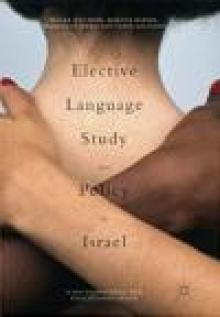
Elective language study and policy in Israel: a sociolinguistic and educational study (Palgrave Macmillan, 2016)
SummaryAs well as describing the instruction of two heritage languages, Russian and Amharic, and two foreign languages, French and Spanish, the book also contains an extensive background on the immigration history and acculturation process of the speakers of each of these languages. An in-depth understanding of the case of Israel will serve as a guide for other countries contending with similar issues pertaining to the adjustment of language policies in light of immigration and other challenging circumstances. Malka Muchnik is a Professor in the Hebrew and Semitic Languages Department at Bar-Ilan University, Israel. She is founder of Israel Studies in Language and Society and author of Language, Culture and Society (Hebrew) and The Gender Challenge of Hebrew. Marina Niznik is Instructor of Russian at the School of Foreign Languages and Russian Literature at Tel Aviv University, Israel. She was head of an international team for writing textbooks of Russian and researches the acculturation of Russian immigrants in Israel. Anbessa Teferra is Senior Lecturer at Tel Aviv University, Israel. He teaches Amharic and other Ethiopian languages, as well as the cultural space of Ethiopia. Since 2002 he is chief supervisor for Amharic instruction in the Israeli educational system. Tania Gluzman is Instructor of French at the Foreign Languages Division and teaches French didactics at the School of Education, both at Tel Aviv University, Israel. She also was a national trainer of French instructors for the Israeli Ministry of Education. This book presents research on the instruction of two heritage languages and two foreign languages in Israeli schools. The authors explore language policy and the way languages are studied from the point of view of students, teachers, schools and curricula. Language in Israel is a loaded concept, closely linked to ideological, political, and social issues. The profound changes in language policy in the West along with two large waves of immigration from the Former Soviet Union and Ethiopia resulted in new attitudes towards immigrant languages and cultures in Israel. Are these new attitudes strong enough to change the language policy in the future? What do students and teachers think about the language instruction at school? Are the teaching materials updated and do they address modern demands? This book provides answers to these and other questions.
-
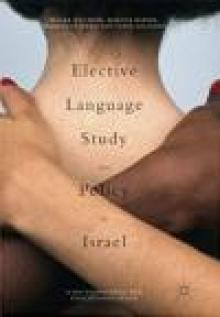
Elective Language Study and Policy in Israel (Palgrave Macmillan, 2016)
SummaryAs well as describing the instruction of two heritage languages, Russian and Amharic, and two foreign languages, French and Spanish, the book also contains an extensive background on the immigration history and acculturation process of the speakers of each of these languages. An in-depth understanding of the case of Israel will serve as a guide for other countries contending with similar issues pertaining to the adjustment of language policies in light of immigration and other challenging circumstances. Malka Muchnik is a Professor in the Hebrew and Semitic Languages Department at Bar-Ilan University, Israel. She is founder of Israel Studies in Language and Society and author of Language, Culture and Society (Hebrew) and The Gender Challenge of Hebrew. Marina Niznik is Instructor of Russian at the School of Foreign Languages and Russian Literature at Tel Aviv University, Israel. She was head of an international team for writing textbooks of Russian and researches the acculturation of Russian immigrants in Israel. Anbessa Teferra is Senior Lecturer at Tel Aviv University, Israel. He teaches Amharic and other Ethiopian languages, as well as the cultural space of Ethiopia. Since 2002 he is chief supervisor for Amharic instruction in the Israeli educational system. Tania Gluzman is Instructor of French at the Foreign Languages Division and teaches French didactics at the School of Education, both at Tel Aviv University, Israel. She also was a national trainer of French instructors for the Israeli Ministry of Education. This book presents research on the instruction of two heritage languages and two foreign languages in Israeli schools. The authors explore language policy and the way languages are studied from the point of view of students, teachers, schools and curricula. Language in Israel is a loaded concept, closely linked to ideological, political, and social issues. The profound changes in language policy in the West along with two large waves of immigration from the Former Soviet Union and Ethiopia resulted in new attitudes towards immigrant languages and cultures in Israel. Are these new attitudes strong enough to change the language policy in the future? What do students and teachers think about the language instruction at school? Are the teaching materials updated and do they address modern demands? This book provides answers to these and other questions.
-
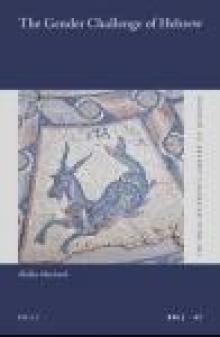
(brill, 2015) The Gender challenge of Hebrew
SummaryThe Gender Challenge of Hebrew is the first book to delve in depth into gender representation over the 3,000-year history of Hebrew. Malka Muchnik analyses the grammatical characteristics of gender, reveals social and cultural issues reflected, and presents challenges for achieving change.
Malka Muchnik, Ph.D. (1992), Bar-Ilan University, is senior lecturer in the Department of Hebrew and Semitic Languages at Bar-Ilan. She authored Language, Culture and Society (Hebrew) and many articles on Sociolinguistics, and is founder and first editor of Israel Studies in Language and Society.
-
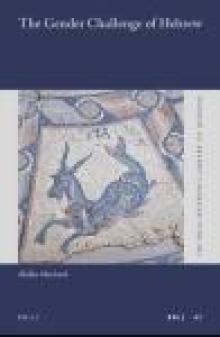
The gender challenge of hebrew (brill, 2015)
SummaryThe Gender Challenge of Hebrew is the first book to delve in depth into gender representation over the 3,000-year history of Hebrew. Malka Muchnik analyses the grammatical characteristics of gender, reveals social and cultural issues reflected, and presents challenges for achieving change.
Malka Muchnik, Ph.D. (1992), Bar-Ilan University, is senior lecturer in the Department of Hebrew and Semitic Languages at Bar-Ilan. She authored Language, Culture and Society (Hebrew) and many articles on Sociolinguistics, and is founder and first editor of Israel Studies in Language and Society.
-

Rhetoric of the Scientific Article - Language and the Discourse Community
SummaryThe scientific article is a subject of great importance to the discourse community. The ability to write an excellent scientific article is the key to success for the scientist-scholar. His advancement and status are almost totally dependent on his ability to publish his research consecutively and continuously in prestigious journals. How did this genre develop? What is the purpose of a scientific article and how does the author go about achieving his aim? How does he create balance between the demand for scientific objectivity, modesty and caution, and the need to present his case in a clear and assertive voice? How does he establish the research area into which he can introduce new arguments? This book provides answers to these and other questions. By means of a linguistic and rhetorical analysis of Hebrew scientific articles, the author reveals the linguistic and rhetorical strategies used by the writers of these articles in order to accomplish their main objective – to ensure that their new conclusions will be accepted by their colleagues as ''scientific fact'', as part of the knowledge base in their respective disciplines. The author describes the process of writing a scientific article from an original perspective that sheds light on its place in the world of research. This book will help enhance awareness of scientific writing and develop a critical approach among the writers of articles and their readers as well. Researchers in the field of linguistics, discourse, rhetoric and argumentation will discover a model for systematic rhetorical analysis of a specific discourse. This book will act as a guide for students and young researchers taking their first steps in scientific writing, and will shed light on the scholar's work and on this special genre.
-
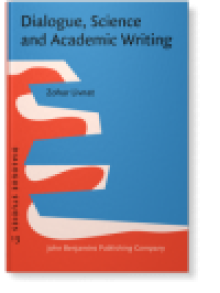
Dialogue, Science and Academic Writing (2012)
SummaryThis book investigates the dialogic nature of research articles from the perspective of discourse analysis, based on theories of dialogicity. It proposes a theoretical and applied framework for the understanding and exploration of scientific dialogicity.
Focusing on some dialogic components, among them citations, concession, inclusive we and interrogatives, a combined model of scientific dialogicity is proposed, that reflects the place and role of various linguistic structures against the background of various theoretical approaches to dialogicity.
Taking this combined model as a basis, the analysis demonstrates how scientific dialogicity is realized in an actual scientific dispute and how a scientific project is constructed step by step by means of a dialogue with its readers and discourse community. A number of different patterns of scientific dialogicity are offered, characterized by the different levels of the polemic held with the research world and other specific researchers – from the “classic”, moderate and polite dialogicity to a direct and personal confrontation between scientists.



